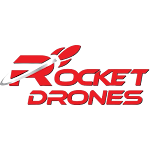Drone racing has emerged as an exciting and educational activity that schools can incorporate into their curriculum. As technology advances, educators are constantly seeking innovative ways to engage students in Science, Technology, Engineering, and Mathematics (STEM). Integrating drone racing into school programs is an effective way to spark interest in these areas, offering hands-on learning experiences that are both fun and informative. This type of program not only introduces students to basic and advanced concepts of aerodynamics and robotics but also encourages teamwork, strategy, and critical thinking.
Setting up the Infrastructure
The first step in starting a drone racing program is to prepare the right space. This means picking a place like a school gym or an outdoor field where the races can happen. It's important to make sure this space is safe and good for flying drones. Also, schools need to buy the necessary equipment, including drones, controllers, and maybe even virtual reality (VR) goggles to make the experience more engaging.
Integrating Drone STEM Curriculum
To successfully add drone racing to school programs, schools should use a drone STEM curriculum. This curriculum teaches students the basic ideas behind how drones work and how to operate them, covering subjects like physics, math, and computer science. Through planned lessons and hands-on projects, students can understand how drones are built, how they fly, and how to use software to control their movements and tricks.
Utilizing Drone STEM Kits
An integral part of the drone racing program is the use of drone STEM kits. These kits provide the necessary components for building and operating drones, which is an excellent way for students to learn about engineering and electronics. The kits typically include motors, frames, propellers, and electronic speed controllers, along with detailed instructions for assembly. By building drones from scratch, students gain a deeper understanding of how each component works together to create a functioning aircraft.
Implementing Drone Racing for Schools
Once the infrastructure is in place and the drone curriculum integrated, the next step is to implement the drone racing activities. Schools should organize regular training sessions where students can practice their flying skills and learn to navigate different racing courses. Competitions can be held to foster a healthy spirit of competition and collaboration among students. These events can also serve as a platform for students to showcase their skills and innovations in drone technology.
Monitoring and Evaluating the Program
To ensure the drone stem curriculum program remains effective and engaging, continuous monitoring and evaluation are necessary. Feedback from students and teachers can help identify areas that need improvement or expansion. Schools might consider incorporating advanced courses as students' skills progress or even partner with technology companies for more sophisticated equipment and training resources.
To summarize
Incorporating drone racing into the school curriculum offers a thrilling and educational experience for students, blending fun with practical STEM learning. As schools look to the future, adopting such innovative programs will be crucial in preparing students for the technological challenges of tomorrow. And for those looking to elevate their drone racing for schools, exploring advanced solutions like Rocket Drones might just be the next step. By staying ahead of the curve, schools can provide their students not only with knowledge and skills but also with the inspiration to soar to new heights.
How Can Schools Establish Successful Drone Racing Programs?
May 03, 2024
0



